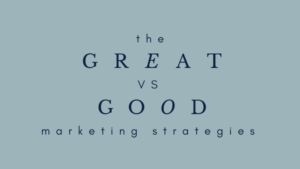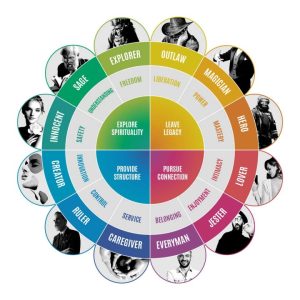I have sat in many a boardroom, eagerly awaiting a presentation from a brand manager or a marketing manager to present what I like to call their “STATE OF THE NATION” or, let’s use their more common name, their Annual Marketing Strategy. I’ve learnt throughout these sessions what makes a GREAT versus a GOOD strategy.
A good marketing strategy often relies on established tactics that have worked reliably in the past. It focuses on proven methods to drive sales and maintain a consistent brand presence. This approach is important, as it establishes a foundation for success. However, a good strategy might stagnate over time if it relies solely on these tried-and-true techniques without evolving to meet changing market dynamics.
In contrast, a great marketing strategy recognises that the landscape constantly shifts. It embraces the principle of “70/20/10” to allocate efforts strategically:
- 70%: Doubling Down on What Works The core of any strategy should be maximising what already works for your brand. The 70% portion is about optimising and refining the tactics that consistently deliver results. By focusing on these high-performing strategies, the brand can maintain steady growth and profitability.
- 20%: Exploring Emerging Marketing Levers A great strategy doesn’t rest on its laurels. The 20% segment is allocated for experimentation with emerging marketing tactics and touchpoints. This is where the strategy explores new channels and approaches the brand hasn’t utilised before. While these methods might not be as proven, they have the potential to become the next big thing in the marketing landscape.
- 10%: Experimenting with New Areas The remaining 10% is dedicated to bold experimentation. This portion is about trying entirely new and uncharted avenues. While these might carry higher risks, they’re designed to yield valuable insights and learnings. It’s not about betting the entire budget or brand reputation on these initiatives but rather about gathering data and understanding potential future opportunities.
Embracing Innovation and Adaptability
What truly sets a great marketing strategy apart is its unwavering commitment to innovation and adaptability. This means anticipating changes before they happen. Consumer behaviours, technologies, and competitive forces evolve constantly, and a great strategy acknowledges this reality.
Rather than being reactive, a great strategy is proactive. It doesn’t wait for trends to emerge—it actively seeks them out. It doesn’t wait for competitors to gain an edge—it strives to stay ahead of the curve. This proactive approach ensures that the brand remains relevant and resonant in the eyes of its audience.
Simply put, the difference between a good and a great marketing strategy lies in its willingness to blend the tried-and-true with the innovative. A good strategy relies on what’s already known to work, while a great strategy harnesses the power of the “70/20/10” rule, continually explores emerging avenues and experiments with new ideas. It remains adaptable and open to change, maintaining relevance and effectiveness in an ever-evolving marketing landscape.
If you’re keen to explore what this could look like for your business – reach out via https://www.linkedin.com/in/tanyamarler/ or via our Contact Us page – https://141consulting.com.au/get-in-touch/







